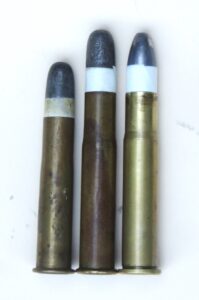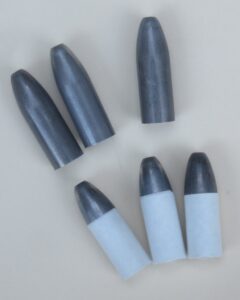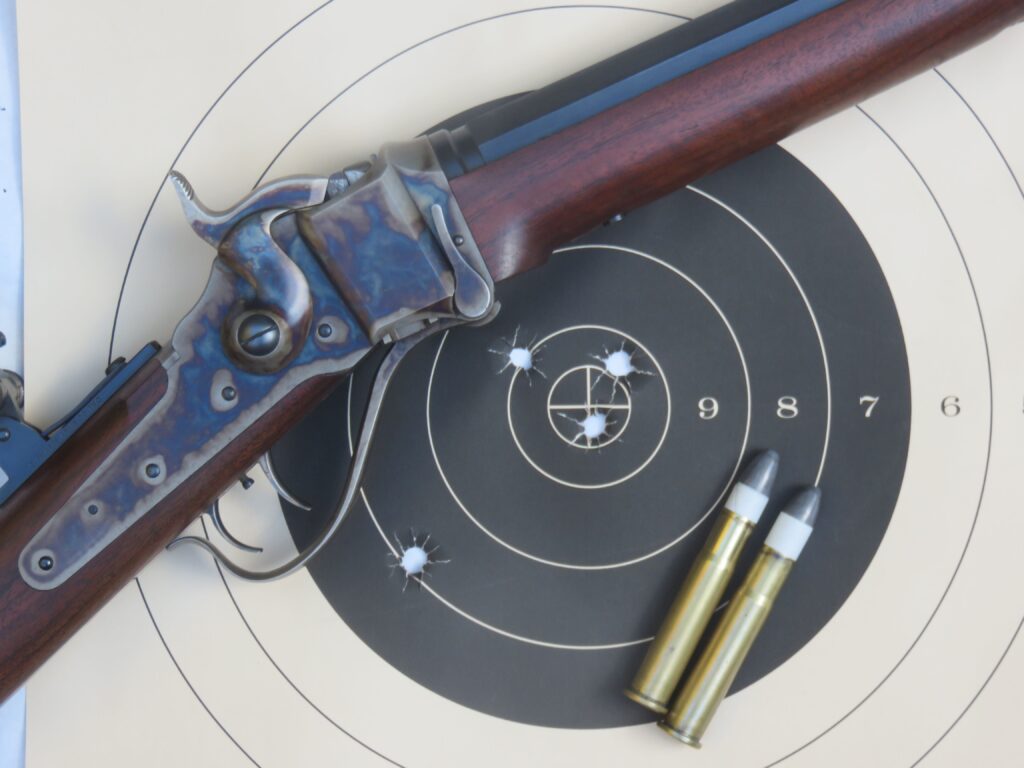
By Mike Nesbitt | Contributing Editor
One old Sharps cartridge that hasn’t gotten much attention lately is the .44-90, which was introduced in 1873 as a long-range cartridge, primarily for buffalo (bison) hunting.
We could say that it caught on quickly but that would paint a rather untrue picture of this caliber’s history. It did catch on rather quickly but for a pretty small group of shooters, the buffalo hunters. This means the overall production of the old .44-90 was much less than what we might expect. And it was not a leader in popularity in the old Sharps rifles but that was not in reflection of this cartridge’s excellent performance.
When we talk about the .44-90 Sharps, we must be specific. The reason for that is because there was more than one .44-90 cartridge. Remington had a couple of them, mainly introduced to be chambered in their famous Number 3 rifle, the Remington Hepburn. One was the .44-90 Remington Special which was a bottleneck cartridge with a case 2 7/16-inches long. Another was the .44-90 Remington Straight which had a straight case with a length of 2.4 inches, much like the .45-2.4-inch Sharps but in .44 caliber.

There was also a .44 straight cartridge with a 2.6-inch long case which was, again, attributed to Remington. While they might be considered similar to the Sharps cartridge, they certainly weren’t the same and the .44-90 Sharps had a bottleneck case 2 5/8-inches in length.
The official name for this Sharps cartridge is the .44-2 5/8, indicating the case length. The “.44-90” name is basically a general way to identify it by referring to its most common load, which used 90 grains of powder. Other loadings were very often used and higher loadings could be ordered from the ammunition manufacturers. The standard sporting bullet weighed 450 grains, a paper patched design. Two other popular bullet weights were 500 and 520 grains. The heaviest load I’m aware of for the .44-2 5/8 cartridge used a 520-grain paper patched bullet over 105 grains of powder and that was a favored load for long-range shooting.
And there was another .44-90 cartridge, which certainly should be mentioned, the “.44-90 Regular” which did use 90 grains of powder, but it was loaded in the .44-77 case which was 2 ¼ inches long. The paper patched bullets only entered the mouth of the cases by a small fraction of an inch and this loading was intended for target shooting only. In fact, most of the long-range matches in the early 1870s where the .44-90 is mentioned, the cartridge being referred to is actually the .44-90 Regular.
That’s the basic round up of .44-90 cartridges and we can’t be surprised if I missed a couple because in the early 1870s the .44 caliber rifles were quite popular, and several gun makers developed loads and cartridges of their own. The Sharps .44-90 was, some will say, primarily made for the buffalo hunters and in that capacity, it worked very well. But even with endorsements like that, the Sharps company was looking to make improvements in addition to reducing the costs of their rifle production. So, in 1876 the .44 and .50-caliber rifles were dropped from standard production in favor of the newer .45 caliber rifles which were rising in popularity. The .44 or .50 caliber Sharps rifles could still be made but that was only on special order, and at increased cost.
So, the .44-90 Sharps actually had a production span of perhaps just four years. The Sharps Model 1874 rifle was not made in very large numbers in the first place and, while specific information in the old Sharps records might be called “spotty,” it was determined that 135 rifles in .44-90 caliber were made in 1876 with another 96 guns in that caliber made in 1877. These figures were taken from Sharps Firearms, Volume II, by Roy Marcot.
Two hunters who used the .44-90 Sharps in the 1870s or early 1880s were O.P. Hanna, the last partner of buffalo hunter Jim White, and Luther “Yellowstone” Kelly. Hanna’s rifle is on display at Old Trail Town in Cody, Wyoming and Kelly’s is in a private collection. Both of those rifles have heavy barrels and Kelly’s rifle was equipped with a scope.
My own interest in the .44-90 Sharps goes back more than a few years. In the early years of my interest, I could only read about it. Later, after I began getting new Sharps rifles for my own shooting, the .44-90 was selected to be my long-range gun. That was not a bad choice at all.
First of all, the .44-90 Sharps is an impressive looking round. Any of the large Sharps’ cartridges are, of course, but somehow the .44-90 “speaks to me louder” than some of the others. Perhaps it is because of the bottleneck case, which I seem to admire. When loaded with a paper patched bullet, the .44-90 Sharps cartridge has an overall length of over 3 ½ inches.
For my handloading with paper patched bullets in this cartridge, I mainly used bullets with diameters which varied from .432” to .438” at their bases in size. Most often those bullets tapered slightly toward the front. Then I tried some of the swaged pure lead 500-grain bullets for paper patching from Buffalo Arms Company which have a diameter of .441” and that is certainly on the large side for a .44 caliber rifle. Some of the old original loads for the .44-90 Sharps used bullets that large in diameter and I wanted to try them.
The .441” diameter bullets are large enough that the paper patches for them were cut using a template for .45 caliber bullets.
Loading bullets that large meant changing some of the steps I would normally take in reloading ammunition for the .44-90 Sharps. Usually, I would re-size the empties but that was out of the question when loading with the .441” diameter bullets, which would measure nearly .450” when patched with two wraps of patching paper. So, the first step in reloading the empties, cases which were fired in the same rifle they’d be shot in again, was to run them through the expander die. This “rounds out” any disformed cases and also “bells” the mouth of the case for easier insertion of the bullets.
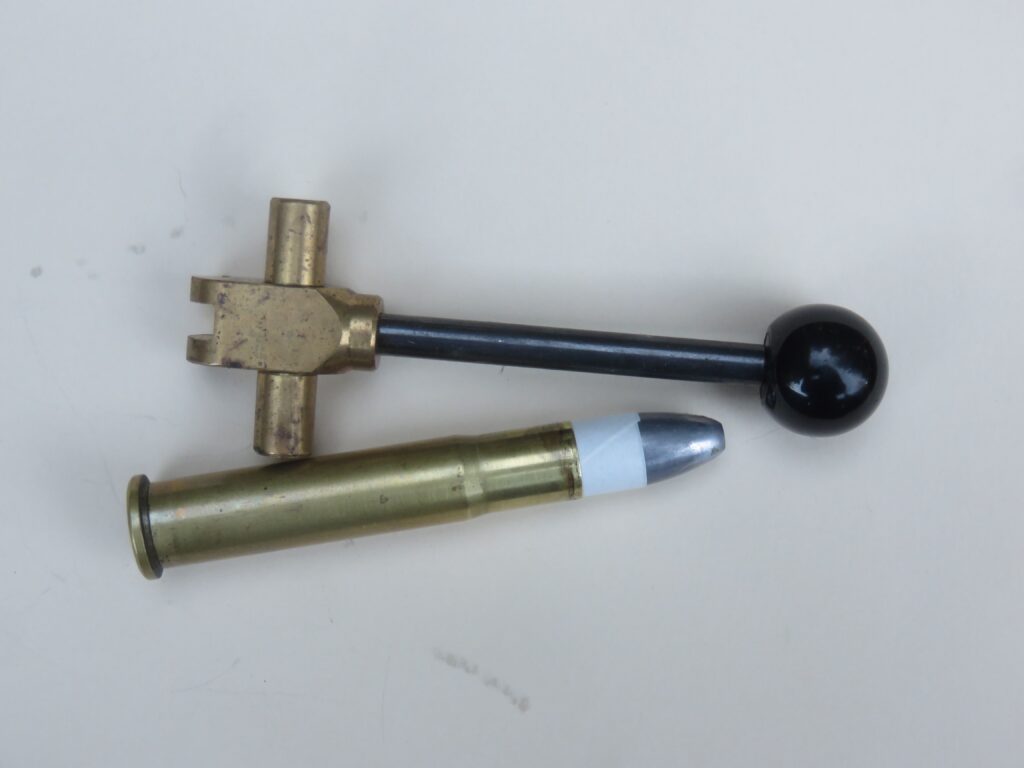
For my first try with these bullets, I only loaded five of them. The next step for those five cases was priming and the brass was quickly primed with Winchester large pistol primers. Then came the powder and Swiss 1 1/2Fg was selected for use, 90.0 grains of it. The powder was compressed under a wad, punched from milk carton material, down to the bottom of the cases’ necks. Then a wad of lube was added, just to keep the fouling soft. Finally, the bullets were twisted into the cases and seated just with fingertips. Trying to use a seating die with paper patched bullets often results in tearing the paper.
The final step in loading these cartridges was to run them part way into a file trim die for the .44 Sharps. That was done because I don’t happen to have a taper crimp die for this caliber. The cartridges were entered into the file trim die just deeply enough to remove the “bell” from the mouth of the cases and to “tighten” the necks of the cases on the bullets just slightly. With that done, the ammo was ready for shooting.
Those bullets needed some special attention while getting them into the cases just because they were certainly on the large side. And, rather similarly, the cartridges needed some special attention while getting them into the rifle’s chamber. They couldn’t be completely chambered without a chambering cam. The cam was needed to push the cartridge into the chamber all of the way, which would also have the bullets entering the rifle. That could be felt while using the chambering cam and I must point out, the only way to un-load the rifle with the cartridges chambered this way was to shoot it. Or, if the need should arise, the cartridge could be driven out with a ramrod, pushing from the muzzle.
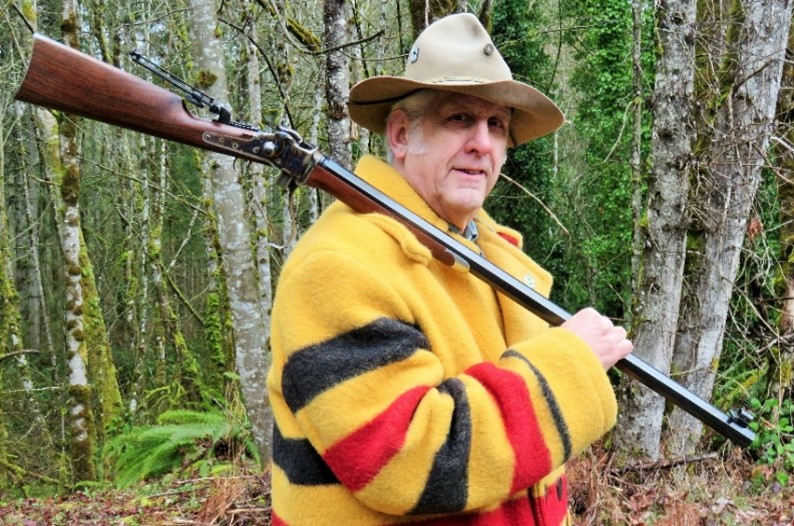
Mike grins after winning an Old West Centerfires match with the gun.
But shooting the bullets was the positive way of getting them out of the barrel, and let me say, these bullets certainly did shoot. My target was a standard bullseye posted at 100 yards. My long-time shooting pal Lynn Willecke was spotting for me, and his reports of the hits became quieter and quieter as the five shots were fired. Only one bullet strayed out of the 10-ring and I must assume that was all my fault. The group delighted me, and the target could be scored as a 48-2X.
My review here is based on just those five shots but there is a little more to say. This was the first time I had used the .441” diameter bullets from BACO. Not only that, but those five shots were also the first time I had ever fired that .44-90, which I’ve had for several years, from the left shoulder. I’m transitioning from a right-handed shooter to a left-hander and the transition has not been an easy one. All the more reason for being pleased with this group.
Now I certainly have more plans for this .44-90 rifle and the .441” bullets from BACO. More shooting will be done, perhaps across the chronograph just to see how fast they are flying. The .44-90 with this load might easily be used in the annual Paper Patch Bullet Shooting Match of the Black River Buffalo Runners next April. With all of that shooting yet to be done, please don’t be too surprised if you hear more about it.

